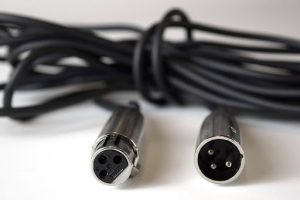10-essential-principles-for-good-web-design

Table of Contents
1.Good design is innovative
“The possibilities for innovation are by no means exhausted. Technological development always offers new opportunities for innovative design. But innovative design always develops alongside innovative technology, and can never be an end in itself. ”
One of the most important technological changes in recent years is the use of mobile phones compared to desktop computers. The web pages respond with a responsive or RWD design, which adapts to the screen size and the functionalities and characteristics of the device with which they are accessed.
2.Good design makes a useful product
“A product is bought to be used. It must meet certain criteria, not only functional, but also psychological and aesthetic. “Good design emphasizes the usefulness of a product while ignoring anything that could harm it”
Before designing, we have to know the users and their needs. Thus we can define the best structure, with elements of navigation and interaction, following the conventions of usability
3.Good design is aesthetic
“The aesthetic quality of a product is integral to its usefulness because the products we use every day affect us and our well-being. But only well-executed objects can be beautiful. ”
In designing a website, we seek a visual harmony that is pleasing to the eye and does not confuse the user. We use the corporate color palette, taking color theory into account , to add meaning and communicate with users.
4.Good design makes a product understandable
“It clarifies the structure of the product. Better yet, you can get the product talking. In the best case, it is self-explanatory ”
In the article on Bauhaus principles applied to web design, we talk about the importance of shapes and colors to explain the function of an element. Thus, we use green rectangles to send forms, or click on a triangle to start a video or presentation.
5.Good design is discreet:
All products and their design must be neutral and sober.
“Products that serve a purpose are like tools. They are not decorative objects or works of art. Therefore, its design must be neutral and restricted, to leave room for the user’s self-expression ”
“Do not make me think”, the motto of usability, is key to eliminate all obstacles that a user may encounter while using our ecommerce. Let’s not add meaningless decorative elements in order to “fill the page.”
6.Good design is honest
“It doesn’t make a product more innovative, powerful, or valuable than it really is. It does not try to manipulate the consumer with promises that cannot be kept ”
On the one hand, we must help web users to make certain decisions, in order to achieve the defined objectives of each page. On the other hand, it is recommended to avoid manipulation, such as the “click-bait” content type. Another example is cookies that help manipulate the prices that are shown to recurring users.
7.Good design has long life
“Avoid being fashionable and therefore never appear dated. Unlike fashion design, it lasts for many years, even in today’s society. ”
We want a modern design that doesn’t seem outdated. For this, as designers we must be up to date with trends, but above all we must study the principles on which those trends are based. So we can recommend to our clients web designs that do not go out of style, since the principles of usability and user experience remain the same.
8.Good design is consistent in its details
“Nothing should be arbitrary or left to chance. The care and precision in the design process show respect for the user ”
Each element on a web page must have a function. Decoration is a whim, not a function. This also means solving design errors instead of hiding them.
9.Good design respects the environment
“Design makes an important contribution to preserving the environment. Conserves resources and minimizes physical and visual contamination throughout the product life cycle ”
In this case we return to responsive design and the principles of mobile first .
10.Good design is design in its simplest form
“Less, but better, because it concentrates on the essential aspects and the products are not loaded with non-essential elements”
The minimalist design requires a lot of work. The key to achieving simplicity is sticking to the fundamentals of design and removing everything that doesn’t contribute to the user experience.
One of the questions we have to ask ourselves in each phase of the design is, is this element necessary or is it just filling up space?







